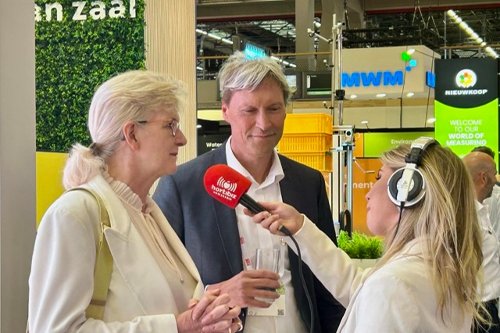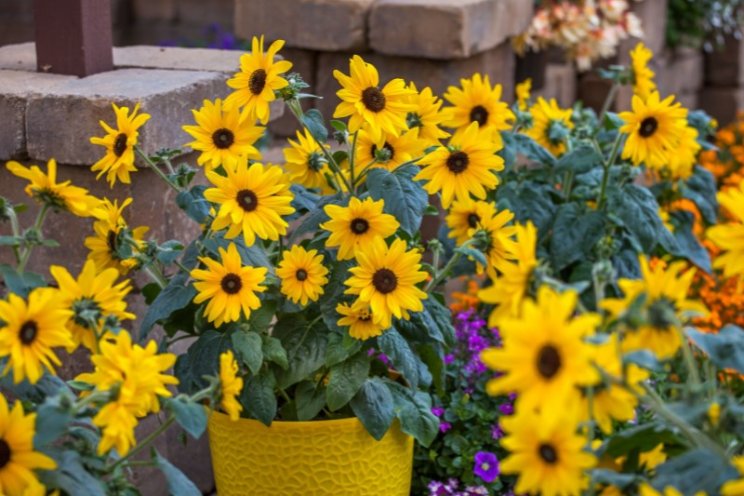Conifer propagation nursery celebrates 15 years
Added on 30 October 2023

Nearly 15 years on from its unique founding story, the nursery is well placed to supply trees for Germany's massive replanting program, as Hubertus explains in this exclusive interview with Jiffy.
It all started with a conifer propagation trial
Uehre Gartenland literally started as an offshoot of a conifer propagation trial using Jiffy-7 Pellets at a regional agricultural college. “My father ran the college's Christmas tree program,” says Hubertus. “In 2009, a grower asked him to trial J-7s because he had heard that they give faster and denser results.”
The results were so good that Hubertus and his father decided to start a business, using the Jiffy system to grow balled & burlapped Abies nordmanniana for the Christmas tree market, and Douglas firs for contacts they had in private forestry.
Jiffy tailors J-7s for bigger seedlings
The Uehres soon realized they needed to offer bigger seedlings—German soil is so fertile that weeds thrive, and small trees struggle to compete. They required a taller J-7 to ensure the right root to shoot ratio. Don Willis [Jiffy Pellet Product Manager] helped extrapolate the 36mm x 100mm pellet size to 42mm x 125mm.
The change also meant the young trees needed more space to grow, so the nursery built additionalgreenhouses. “We had to,” says Hubertus. “Plant quality needs to be perfect to survive in this market.”
"The Jiffy system is the best there is”
Thanks to that attitude, Uehre Gartenland rapidly grew its customer base by word of mouth and by showing at trade events around the country. It started contract growing conifers and broadleaf trees for German forestry service companies and state-owned forests, while many of its Christmas trees were shipped to Switzerland, nearly 800 kilometers away.
While the nursery began using different growing methods, many customers continued to prefer container-grown conifers started in J-7s. “The Jiffy system really is the best there is. The net surrounding the pellet holds the peat together, and the air pruning method is optimal for root formation. Other systems can’t match the success rates and the way the trees grow on thanks to the many fine roots they develop.”



Wide range of benefits for tree propagation
Hubertus is quick to list the Jiffy Pellets’ additional benefits for conifer propagation:
- Produce a good, solid rooted bale
- Ship very successfully
- No need to plant them as soon as they arrive at their destination
- Easy to handle and plant, even in dry, windy conditions
- Work well with many planting systems, including ergonomic dibbles and excavators with revolving magazines
- No transplant shock, resulting in faster growth
- Fewer losses all-round
Why Jiffy Pellets make financial sense
Uehre Gartenland's state-owned forest customers specifically favor the Jiffy system because it extends the planting period from early fall to late spring by protecting the young plants’ roots. Customers have also found that J-7-grown trees are much more tolerant of poor planting practices by inexperienced workers—practices which can cause irreversible root damage to bareroot specimens.
Hubertus sums it up like this: “It’s a question of educating people because investing in strong container-grown plants makes financial sense: The price of the trees is low compared to all the other costs involved in starting a new forest, like field clearing, fence building, planting the trees, and caring for them for the first three to five years.”
Room to grow
Today, the nursery uses J-7 Pellets to propagate container-grown plants like one-year larches, many of its two- and three-year Christmas trees, and the two-year redcedars. It sows directly into the J-7s, planting two or three seeds per unit depending on germination rates. While some producers start the seeds off in small pellets and then transplant them into bigger ones, Uehre Gartenland has found it simpler to remove the double or triple seedlings and discard any empty pellets.
It uses specially designed propagation trays in wooden frames to ensure the seedlings don’t root into each other. Keeping the frames 10cm (approx. 4 inches) off the ground allows air to circulate underneath. After a year, the nursery spreads each tray of seedlings over two trays, doubling the amount of space they have to grow. The results are excellent. “We find that Jiffy trees overtake their bareroot equivalents by year two.”
Helping to replant half a million hectares
Demand for young trees in Germany is expected to be high for the next ten years or more—500,000 hectares (over 1.2 million acres) need to be replanted due to losses caused by bark beetle, and ultimately, climate change.
Hubertus is also seeing increased orders from bareroot nurseries who subcontract their container plant production. It is currently trialing Jiffy Preforma Plugs for the one-year seedlings it grows for these customers. “They sometimes want the seedlings by early fall and the Preformas hold together so well that we can transplant them in September.”


“After 15 years in the business, we know which methods work best for our main production, but we want to stay adaptable,” says Hubertus. “Above all, we’ve learned to think big: Bigger Jiffy-7s, more capacity, and offering large, high-quality plants for the best success rates.”
Let’s work together
Jiffy is a leading global supplier of premium growing media and solution thinking. We aim to serve you, our customers in plant propagation and cultivation, to achieve better results with fewer worries. We do this by continually improving, innovating, and working toward our common goals, based on scientific research, teamwork, and decades of experience. Let’s develop sustainable plant growing solutions together: Let’s start today!
More news















